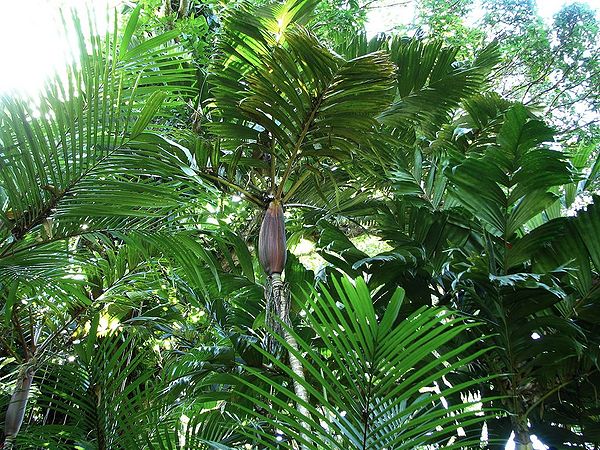Difference between revisions of "Pinanga maculata"
| Line 107: | Line 107: | ||
File:3819555183_8953941886_b.jpg|Cairns Botanic Gardens, Queensland. 14th August 2009. Photo by tanetahi | File:3819555183_8953941886_b.jpg|Cairns Botanic Gardens, Queensland. 14th August 2009. Photo by tanetahi | ||
File:3820359432_68386cb795_b.jpg|Cairns Botanic Gardens, Queensland. 14th August 2009. Photo by tanetahi | File:3820359432_68386cb795_b.jpg|Cairns Botanic Gardens, Queensland. 14th August 2009. Photo by tanetahi | ||
| − | + | File:pmIMGP3611.JPG|Mt. Warning Caldera Nth NSW Australia. Photo by Pete. | |
File:6080655868_7852d825b4_o.jpg|Island of Palawan, Philippines. Photo by Shirley Sekarajasingham | File:6080655868_7852d825b4_o.jpg|Island of Palawan, Philippines. Photo by Shirley Sekarajasingham | ||
image:PmDSC_0452.jpg | image:PmDSC_0452.jpg | ||
Revision as of 00:52, 20 April 2017
| Pinanga (pih-NAHN-gah) maculata (mak-oo-LAH-tah) | |||||||
|---|---|---|---|---|---|---|---|
 Hawaii. Photo by BGL | |||||||
| Scientific Classification | |||||||
| |||||||
| Synonyms | |||||||
|
| |||||||
| Native Continent | |||||||
|
| |||||||
| Morphology | |||||||
| |||||||
| Culture | |||||||
|
| |||||||
| Survivability index | |||||||
|
| |||||||
| Common names | |||||||
|
| |||||||
Contents
Habitat and Distribution
Philippines. Endemic to the Philippines; in primary lowland forests.Description
Solitary medium-sized palm growing to 4-5 m tall. The smooth green trunk has prominent leaf scar. The leaves are large, with regularly arranged leaflets. Leaflets are green, dissected once or twice at the apex. Young leaves mottled with dark green or reddish green on the upper surface. Fruit is ovoid, red to black, with one seed.
Solitary palm 5 m tall with purplish/brown crownshaft. Leaves up to 2 m long, with irregularly spaced leaflets, dark green above with large irregular areas of lighter green ("Tiger" stripes). Flowers borne below the leaves, in branching axis, and green. Fruits ovoid, red to black, with one seed. (Madulid D. A. 2000.) Editing by edric.
Culture
Warm, sheltered, and moist, although it can take night-time temps down to 5°C. Cold Hardiness Zone: 10a
Comments and Curiosities
This red leaf form is not typical. I have observed the the new leaves of my other seedlings and most open plain mottled green with no signs of reddish coloration at all. A few open with brownish/olive coloration but are not as attactive as the red form.
It needs to be observed if this red feature is carried over as the palm matures.
It is also unknown if this is a genetic trait or caused by cultural conditions.
Conservation: This is an attractive endemic palm found in primary forests in the Philippines. The juvenile plant is attractive because of its mottled leaves and the mature plant is also elegant in form. It is occasionally planted in local gardens but is not widely cultivated. It is readily propagated by seeds. Habitat destruction, and kaingin are threats to the plant.
- IMAGE GALLERY
External Links
References
Phonetic spelling of Latin names by edric.
Special thanks to Geoff Stein, (Palmbob) for his hundreds of photos.
Special thanks to Palmweb.org, Dr. John Dransfield, Dr. Bill Baker & team, for their volumes of information and photos.
Glossary of Palm Terms; Based on the glossary in Dransfield, J., N.W. Uhl, C.B. Asmussen-Lange, W.J. Baker, M.M. Harley & C.E. Lewis. 2008. Genera Palmarum - Evolution and Classification of the Palms. Royal Botanic Gardens, Kew. All images copyright of the artists and photographers (see images for credits).
Madulid D. A . 2000. Pictorial cyclopedia of Philippine ornamental plant. Second edtion. Bookmark,Inc.;292-293.
Many Special Thanks to Ed Vaile for his long hours of tireless editing and numerous contributions.











































































